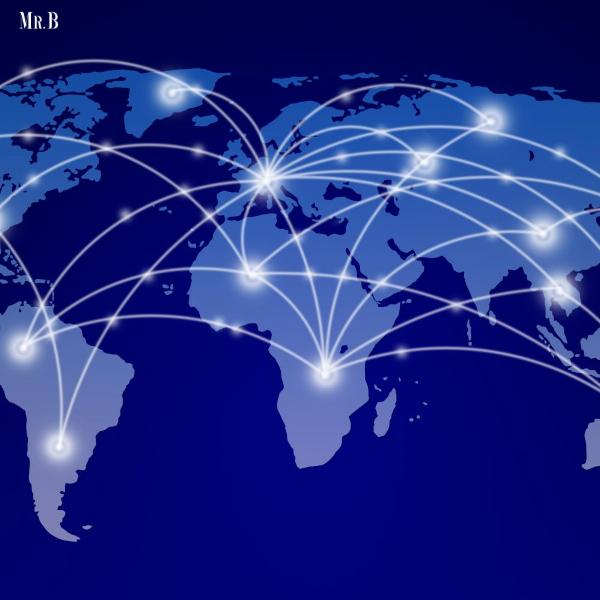Understanding the Regional Scale of Analysis in Geography

Strong 8k brings an ultra-HD IPTV experience to your living room and your pocket.
Category: Business
Understanding the Regional Scale of Analysis in Geography | Mr. Business Magazine
Geography, as a discipline, examines the spatial relationships and patterns found on Earth. One of the key concepts in geography is the “scale of analysis,” which refers to the level at which geographic data is analyzed and interpreted. This can range from the global scale down to the local scale. A particularly insightful level is the regional scale of analysis, which bridges the gap between broad, global patterns and detailed, local specifics. Understanding the regional scale of analysis is crucial for comprehensively addressing various geographic, environmental, social, and economic issues. This article delves into the importance of regional analysis, its methodologies, applications, and challenges.
Defining the Regional Scale of Analysis
The regional scale of analysis focuses on areas that are larger than localities but smaller than the entire globe, often encompassing multiple administrative units or natural zones. A region can be defined by physical characteristics, such as climate or topography, or human-related factors, such as culture, economy, or politics. Regions can be formal, characterized by homogeneity in certain attributes, or functional, defined by interactions and connections, such as a metropolitan area and its hinterland.
Importance of the Regional Scale of Analysis
Understanding the Regional Scale of Analysis in Geography | Mr. Business Magazine
1. Contextual Understanding:
Regional analysis provides context that is often missed at larger or smaller scales. It allows for the study of spatial patterns and processes that are not apparent at the national or local levels. For example, economic disparities and development trends can be better understood when viewed within the regional context.
2. Policy Formulation and Implementation:
Policymakers often operate at the regional level, making it essential for geographic analysis to match this scale. Regional analysis helps in the formulation of policies that are tailored to the specific needs and conditions of a region, leading to more effective and targeted interventions.
3. Resource Management:
Many natural resources, such as water, forests, and minerals, are managed on a regional basis. Analyzing these resources at the regional level helps in understanding their distribution, usage patterns, and sustainability.
4. Disaster Management and Environmental Planning
: Environmental challenges and disasters often transcend local boundaries. Regional analysis is crucial in planning for and responding to such events, ensuring that strategies are comprehensive and take into account the interconnectedness of different areas within a region.
Methodologies of Regional Scale of Analysis
1. Spatial Data and Geographic Information Systems (GIS):
GIS technology is fundamental in regional analysis. It allows for the collection, visualization, and analysis of spatial data, helping to identify patterns and relationships across a region.
Understanding the Regional Scale of Analysis in Geography | Mr. Business Magazine
2. Remote Sensing:
Satellite imagery and aerial photography provide valuable data for regional analysis. Remote sensing helps in monitoring land use changes, environmental degradation, and urban expansion.
3. Statistical and Quantitative Methods:
These methods are used to analyze data related to population, economy, health, and other factors. Techniques such as spatial autocorrelation, cluster analysis, and regression models help in understanding regional disparities and trends.
4. Qualitative Approaches:
Interviews, surveys, and case studies provide in-depth insights into regional dynamics. These methods help in understanding the human and social aspects that quantitative data might not capture fully.
5. Regional Typologies and Classifications:
Creating typologies and classifications based on specific criteria (e.g., climate zones, economic activity) helps in simplifying and organizing the analysis. This approach aids in comparing and contrasting different regions.
Applications of Regional Scale of Analysis
1. Economic Development:
Regional analysis is essential for understanding economic development patterns. It helps in identifying growth hubs, lagging areas, and the factors driving these dynamics. For instance, examining industrial clusters or the spatial distribution of investment can reveal important insights into regional economic strategies.
2. Urban Planning:
Cities and metropolitan areas are often analyzed at the regional scale to understand urban sprawl, transportation networks, housing markets, and infrastructure development. This scale of analysis supports sustainable urban planning and the efficient allocation of resources.
3. Environmental Management:
Regions are key units for managing environmental resources and addressing issues such as pollution, deforestation, and biodiversity loss. Regional analysis helps in the creation of environmental policies that are attuned to the specific ecological and socio-economic conditions of an area.
4. Public Health:
Health issues often have regional dimensions. Analyzing health data at the regional level helps in identifying patterns of disease outbreaks, healthcare accessibility, and the impact of environmental factors on health. This analysis supports the design of effective public health interventions.
5. Transportation and Infrastructure:
Transportation networks and infrastructure development are best understood at the regional level. This analysis helps in planning for connectivity, reducing congestion, and improving accessibility across a region.
Challenges in Regional Scale of Analysis
1. Data Availability and Quality:
Reliable and consistent data at the regional level can be challenging to obtain. Data discrepancies between different sources and regions can affect the accuracy and comparability of the analysis.
2. Defining Regions:
The criteria for defining regions can vary, leading to inconsistencies in regional boundaries. This issue complicates the analysis, as different studies might use different regional definitions.
3. Complexity of Interactions:
Regions are often characterized by complex interactions between various factors such as economic activities, social dynamics, and environmental processes. Capturing these interactions requires sophisticated analytical techniques and interdisciplinary approaches.
4. Scale Mismatch:
Issues can arise when the scale of analysis does not align with the scale of the phenomena being studied. For example, regional policies might be ineffective if the underlying issues are better addressed at a smaller or larger scale.
5. Political and Administrative Boundaries:
Administrative boundaries do not always coincide with natural or functional regions, leading to challenges in regional planning and analysis. Coordinating policies across different administrative units can be difficult.
Case Studies in Regional Scale of Analysis
Understanding the Regional Scale of Analysis in Geography | Mr. Business Magazine
1. The European Union (EU):
The EU provides a rich context for regional analysis. With its diverse member states, the EU conducts extensive regional studies to support economic cohesion and development. The analysis focuses on identifying disparities between regions and implementing policies to promote balanced development.
2. The Rust Belt in the United States:
This region, once a hub of manufacturing, has undergone significant economic transformation. Regional analysis has been instrumental in understanding the decline of traditional industries and the emergence of new economic activities, guiding efforts to revitalize the area.
3. The Amazon Basin:
Regional analysis of the Amazon Basin is crucial for environmental management and sustainable development. Studies focus on deforestation, biodiversity, and the socio-economic conditions of indigenous communities, informing policies to protect this critical region.
4. The Sahel Region in Africa:
The Sahel faces numerous challenges, including desertification, conflict, and food insecurity. Regional analysis helps in understanding these interconnected issues and in designing integrated approaches to address them.
5. The Greater Mekong Subregion:
Comprising parts of Cambodia, Laos, Myanmar, Thailand, Vietnam, and China, this region is analyzed to promote economic cooperation and sustainable development. The analysis focuses on areas such as infrastructure development, trade, and environmental conservation.
Conclusion
The regional scale of analysis is a vital tool in geography and related disciplines, providing a bridge between global and local perspectives. By focusing on regions, researchers and policymakers can gain a nuanced understanding of spatial patterns and processes, leading to more effective decision-making. Despite the challenges, the insights gained from regional analysis are indispensable for addressing complex issues in economic development, urban planning, environmental management, public health, and beyond. As geographic data and analytical methods continue to advance, the importance of regional scale analysis is likely to grow, offering even deeper insights into the interconnected world we live in.
Curious to learn more? Explore this Article on: Mr. Business Magazine
Note: IndiBlogHub features both user-submitted and editorial content. We do not verify third-party contributions. Read our Disclaimer and Privacy Policyfor details.


